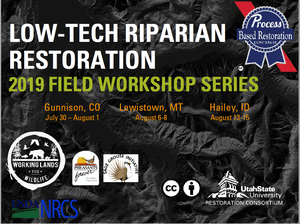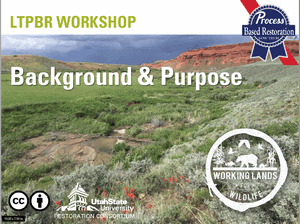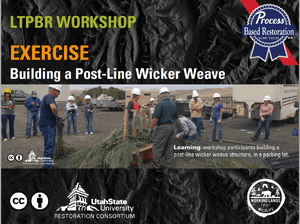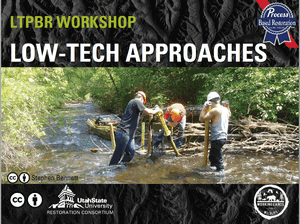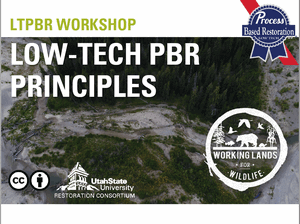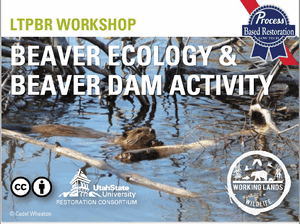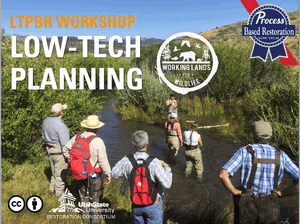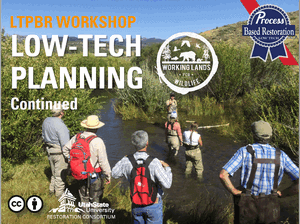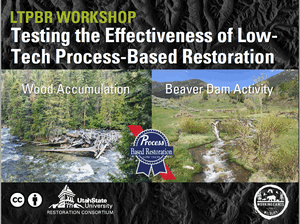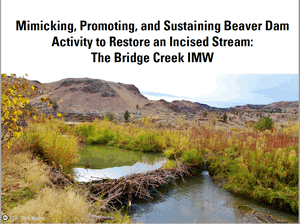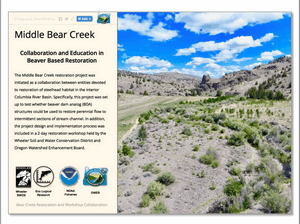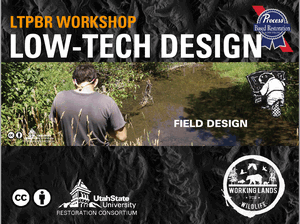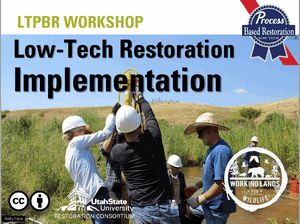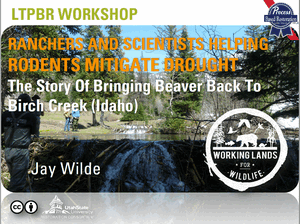Old Intro LTPBR Workshop Materials
Below you can find PDFs of the slides we covered in the intro to low-tech process-based restoration workshops for 2019. Each is licensed with a Creative Commons licence, so you are free to re-use subject to the terms of the license.
NOTE: These were superseded in 2020 by the free virtual workshop materials:
Day 1 - Intro to Low-Tech Process Based Restoration
1. Logistics and Introductions
The workshop kicks off with some introductions and logistics.
2. Background and Purpose
Next, we set the stage for why we're here, underscore the scope of degradation, and lay out a vision for what is possible.
Elaborated in Chapter 1 of the design manual.
3. Build Your First Beaver Dam Analogue Exercise
An icebreaker to get people thinking about construction, logistics and safety by building a BDA. Participants follow a simple wicker weave recipe.
See also the Pocket Guide.
4. Introduction to Low-Tech Approaches
Working through the diversity of low-tech approaches and structure types.
Elaborated in Chapter 1 and Chapter 4.
5. Guiding Principles
Perhaps the most important aspect to understand: the underlying principles.
See Chapter 2 of the design manual.
Day 2 - Planning and Designing Low-Tech Riparian Restoration
6. Beaver Ecology
Understanding beaver ecology and why they build dams.
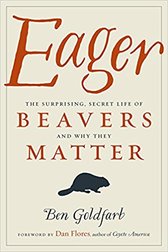
This is expanded in Ben Goldfarb's book Eager.
7. Conservation Planning Process
Framing low-tech restoration in the NRCS Conservation Planning Process.
- Introduction to Conservation Planning - Slides (PDF)
- Riverscape Valley Setting Exercise - Handout (PDF)
See Chapter 3.
8. Planning in Detail
After field observations, a series of desktop exercises on planning phases.
- Conservation Planning Process - Slides (PDF)
- Valley Bottom Mapping & Risk Assessment - Handout (PDF)
Also see Chapter 3.
9. Case Study: Asotin Creek
Insights from the Asotin Creek Intensively Monitored Watershed.
10. Case Study: Bridge Creek
Science behind mimicking and promoting processes of beaver dam activity.
Extra Case Study Examples
Nick Weber shares examples from Bear Creek and Parish Creek:
See more in case studies.
11. Design
Covering the LT-PBR design process to prepare for Day 3.
12. Implementation
Covered on Day 3 in the field:
Based on Chapter 6.
A Rancher’s Story: Reintroducing Beaver to Bring Back Perennial Flow
Idaho rancher Jay Wilde shares his experience:
If you missed it, see a version on the talks page.
Day 3 - Building Low-Tech Restoration Structures
- Design exercise (Chapter 4) and Pocket Guide
- Logistics, safety & post pounding (Chapter 6)
- Hands-on construction of structures (PALS, Post-Assisted BDAs, Postless BDAs)
- Adaptive management discussions (Chapter 3, Chapter 4, Chapter 6)
- Workshop synthesis & next steps (contractors page)
References
- Silverman NL et al. 2018. Low-tech riparian and wet meadow restoration increases vegetation productivity and resilience across semi-arid rangelands. Restoration Ecology. DOI: 10.1111/rec.12869
(and the rest of your references would continue similarly, happy to help finish them too)
